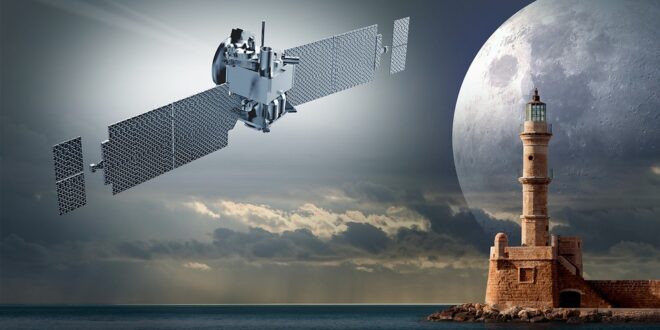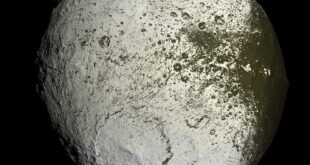Exploring our Universe: The Top 12 Space Probes
Are you fascinated by space exploration and the secrets hidden out there in the vast expanse of the universe? With technological advancements, space probes have been sent to study our solar system and beyond, collecting data, analyzing it, and revealing scientific discoveries we never thought were possible. These space probes have been sent to explore distant planets, moons, asteroids, and comets, providing valuable insights that have widened our perspective on our origins and our place in the universe.
The Pioneer Missions
Pioneer 10 and 11
Pioneer 10 and 11 were the first successful missions to make a flyby of Jupiter, providing valuable insights on the giant planet and its moons. Pioneer 10 was launched in 1972, and has been on its trajectory through the galaxy for over 49 years. Pioneer 11, launched a year later, was the first spacecraft that flew by Saturn, as well as on through the solar system to study interstellar space. Both space probes carry a plaque with illustrations of a man and a woman, representing humanity, in case they are ever found by intelligent lifeforms.
The Voyager Missions
Voyager 1 and 2
Launched in 1977, the Voyager missions are among the most well-known probes that have explored the solar system. Voyager 1 and 2 reached Jupiter and Saturn, and flew by Uranus and Neptune. The probes carried the famous ‘Golden Record’, a greeting to any extraterrestrial life, with sounds, images and music that showcase life on earth. The probes are still going strong and are currently the farthest human-made objects in space. Voyager 1 has entered interstellar space, while Voyager 2 is still in the outer layer of the heliosphere, on its way to interstellar space.
The Mars Exploration Rovers
Spirit and Opportunity
The Mars Exploration Rovers, Spirit and Opportunity, were launched in 2003, aiming to uncover the secrets and history of Mars. They studied the soil, geology, and atmosphere of the red planet, while constantly sending back valuable data to base station controllers on Earth. The mission mainly focused on gathering geological and astrobiological evidence on the potential of Mars having hosted some form of primitive life in the past.
Huygens
Huygens Probe
Huygens was launched in 1997, attached to the Cassini spacecraft, which studied Saturn and its moons for almost two decades. The Huygens Probe was separated from Cassini in 2005, and landed on Saturn’s largest moon, Titan. This was the first spacecraft to land on an outer solar system celestial body. The mission has revealed what lies beneath the foggy exterior of Titan; a surface dotted with hills, lakes, and seas of liquid methane and ethane.
Recent Mars missions
Curiosity and Perseverance Rovers
Curiosity and Perseverance are the latest Mars rovers, continuing the exploration of Mars to gather data on climate, geology, and potential for habitable conditions. Curiosity has been on the surface of Mars since 2012 and Perseverance, which landed on Mars’ Jezero Crater in 2023, has a focus on collecting rock and soil samples and conducting experiments to detect biosignatures of past or current microbial life.
NASA’s New Horizons mission
New Horizons Spacecraft
New Horizons was launched in 2006, flying by Pluto and Charon in 2015, providing valuable insights into the former ninth planet of our solar system and its satellites. This probe is still flying through the outer solar system and exploring other Kuiper Belt Objects.
Cassini-Huygens mission
Cassini Spacecraft
Cassini was launched in 1997, studying Saturn and its impressive system of rings and moons, while also contributing to the study of Titan, the most insightful of Saturn’s moons. The probe discovered oceans of sub-surface water on Saturn’s moon, Enceladus and ended its mission, plunging into the planet’s atmosphere in 2017, to avoid possible contamination of life-forms on the potentially habitable moons of Saturn.
Tektite
The Tektite habitat
Unlike other space probes on the list, Tektite was a laboratory-habitat submerged in the ocean off the coast of St. John in the U.S. Virgin Islands. Different NASA missions between 1969 and 1970 tested the adaptation and interaction of humans in an environment similar to those required for living in space habitats of the future.
These space probes have provided valuable insights into our universe, unlocking mysteries and exploding myths that we believed to be stories just a century ago. With constant advancements, and possibilities to learn from failed missions, projections for future prospects of such explorations are boundless. The contributions of these incredible probes have shaped our understanding of the world and are just the start of our quest to unveil the secrets of celestial bodies beyond our planet’s boundaries.
 Mind Uncharted Explore. Discover. Learn.
Mind Uncharted Explore. Discover. Learn.



